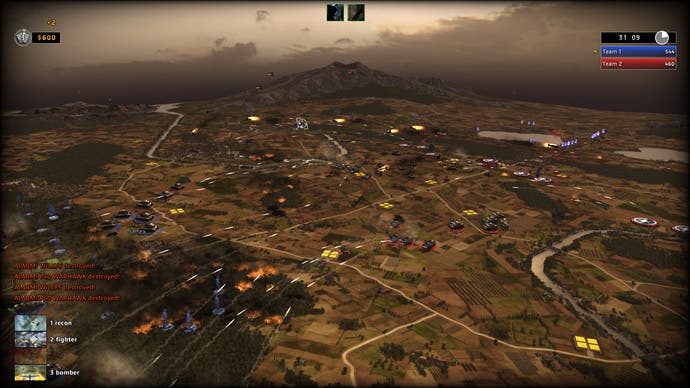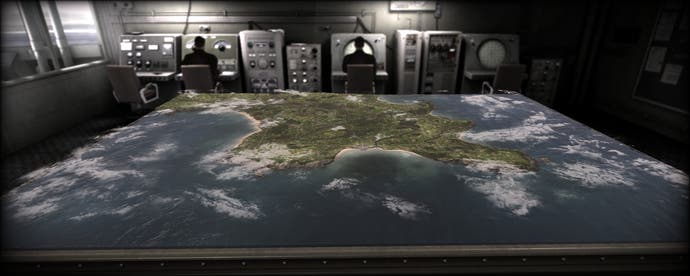R.U.S.E.
Arty essence.
Like any well-planned operation, this article begins with a mission briefing. Here's the wording from one of R.U.S.E.'s one-off scenario missions:
"July, 1940: Kent County, England. With France defeated, the Wehrmacht attempts a landing in England to finish off its last enemy. This operation is codenamed Seelöwe. Despite the fierce resistance of the RAF and Royal Navy, the German troops gain a foothold in Kent and start advancing on London..."
This, then, is Operation Sealion: Admiral Raeder's plan to land German forces in England. The initial strategy called for an insanely wide invasion front stretching from Dorset to Kent, and the German military machine simply couldn't come up with the goods, so the plan was scrapped. In 1974, the Royal military Academy at Sandhurst simulated the operation, and found that a beach-head could've been established, though any northerly push from the south coast would've been blunted by layers of pillboxes, aircraft, and Dad's Army.
R.U.S.E. does a great line in what-ifs. In the Operation section of the main menu you'll find a series of set-piece battles which place you in command of specific forces at specific points in the Second World War, and many of them are imaginary extensions of the facts. The UK in alliance with Italy, developing prototype weapons to attack Germany directly. Stalingrad ends, and the Germans find they have the upper hand. And of course, Operation Sealion, which sees you making a jack-booted race for London, against an RAF on high alert, with zero air-support because the Brits still rule the skies. These missions offer an exuberant exploration of what was, and what could have been..

And that's a neat keystone to R.U.S.E.'s structure: it's a high-paced RTS which gives you the toys of the Second World War, and lets you get creative. But not just with historical facts, it's important to note. The application of arms in any given scenario is, like any RTS, down to using the right units in the right situations – such as infantry exploiting cover opportunities to support armoured thrusts, for example. Such decisions will help you win battles. But the real battlefield genius comes from using the many 'ruses' available to you.
Tap the menu button at any point and you're offered a kind of cross-media bar which contains all your build-options, comprising structures, troops, tanks and so forth. At the far left of the bar is the ruse menu, and there's a good reason it sits first in line: you'll be using it constantly.
By and large, these Ruses are designed to disrupt your enemy's intelligence and increase your own. As you zoom out from ground-level upwards, units are represented by circular markers. Unless a unit is completely hidden, such as troops in a forest, these markers are visible to all combatants – so both you and your opponent can see each other's general force disposition. One of the key functions of the ruses is to monkey around with these markers. More specifically, they enable you to monkey around with your opponent's perception of them.

Picture this scenario. It's early days in a battle, and you're focusing on mass infantry-production. You're moving large stacks of troops through forests, in order to keep them mostly unseen, towards a midfield supply-depot that has been claimed by your opponent. You play the Radio Silence ruse on the sector your troops are in, which keeps them hidden from your opponent's view, even in the open.
You build a Decoy Tank Factory, using the relevant ruse, at a sector close enough to his base for him to notice. You then activate the Fake Offensive ruse, which speed-builds a cluster of four tanks (pleasingly represented, to you, in balsa-wood form). You send them off towards his main base, while you concentrate on sneaking those troops towards his outlying supply depot.
What does he see? Four heavy units – recognisable to him as such from their circular markers, but certainly not as fakes – spannering towards his base. Panic ensues. Troops are re-deployed to meet the threat. Eyes turn to protecting the home base, and attention withdraws from outlying concerns. That depot should now be a cinch to nab, and by the time his troops actually draw line-of-sight on the fake tanks and the deception goes up in smoke, your resource-laden supply trucks will be chugging merrily home to feed the war-effort.

